The increase in greenhouse gas emissions from human activity has led to an increase in global temperatures and a change in climate. But greenhouse gases have a critical function in the atmosphere, without which life on earth could not survive. The trick is keeping the balance of greenhouse gases, which nature does through a number of natural cycles.
If there were no greenhouse gases, heat reflected by the earth’s surface would be lost to space. As a result, the temperature of the earth would drop from around 57F to roughly 0F. Lakes & oceans would freeze over, plants & animals would die, & most life would not be able to exist.
Greenhouse gases themselves are needed for life to exist. The problem is when human activities like energy production, industrial processes and deforestation disturb the earth’s natural cycles.
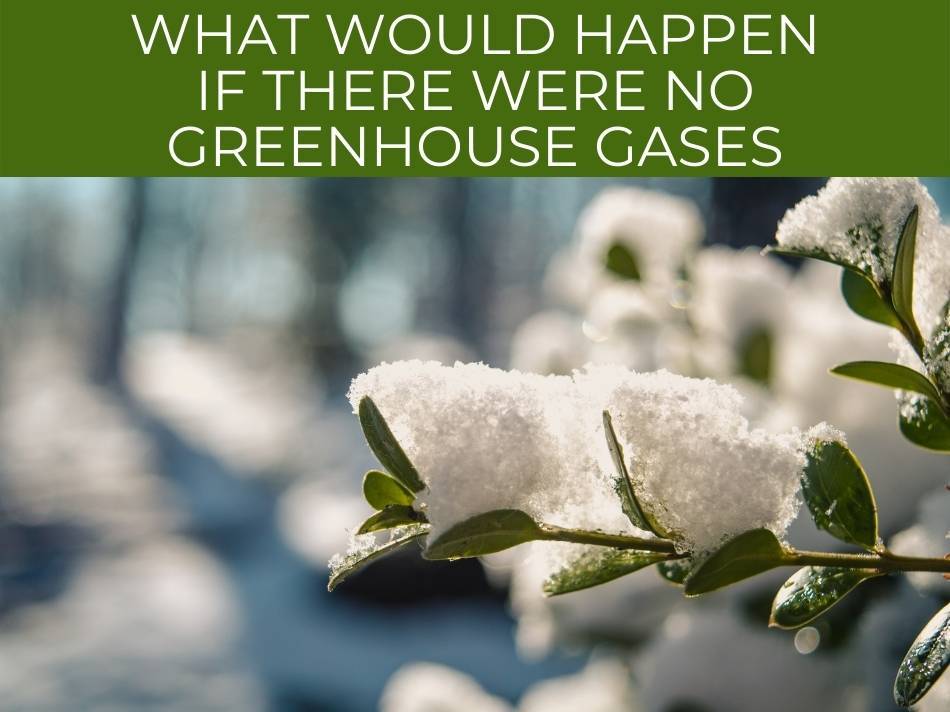
What would happen if there were no greenhouse gases
Without greenhouse gases, all of the heat that is reflected from the earth’s surface would go straight back out into space.
This heat loss would lower the temperature of the earth by around 57 degrees Fahrenheit.
If there were no greenhouse gases, the heat that is reflected by the earth’s surface would all be lost into space and none would be bounced back. The temperature of the earth would drop by about 57 degrees Fahrenheit, making nearly all life extinct.
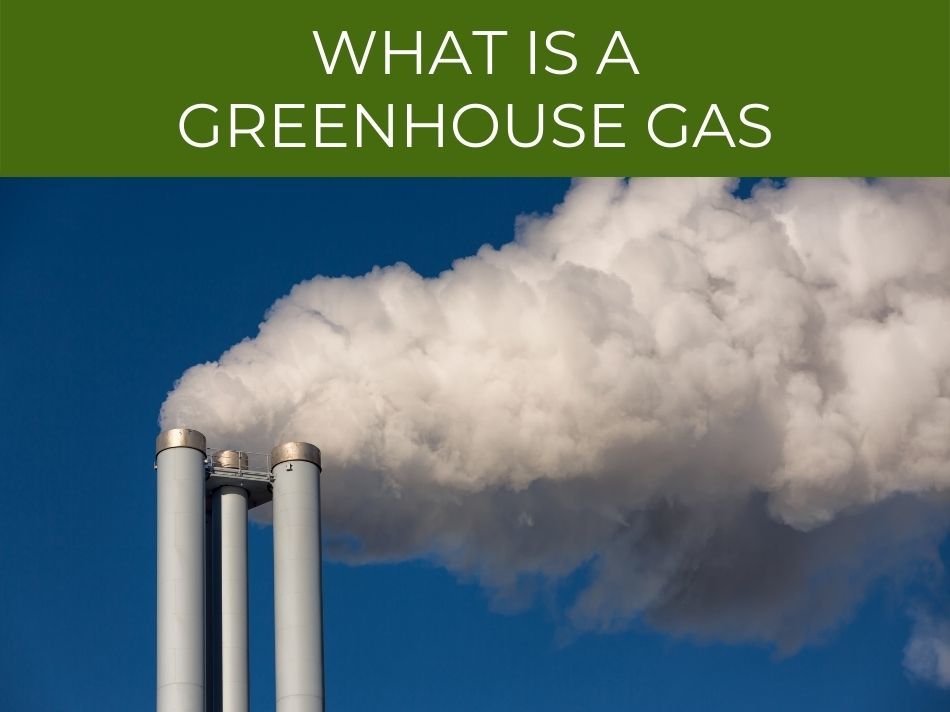
What is a greenhouse gas
Greenhouse gases allow sunlight to pass through them, but trap the heat that is reflected from the earth’s surface and bounce it back towards the earth, warming the atmosphere.
It is known as the greenhouse effect because it is similar to the way that glass in a greenhouse behaves.
Glass allows sunlight through, but traps heat energy, warming the greenhouse.
See our full article on polycarbonate panels for greenhouses.
A greenhouse gas is a gas in the earth’s atmosphere that allows sunlight to pass through, but traps heat energy that is reflected from the surface. This heat is bounced back to the Earth’s surface, & warms it up. It is similar to the way greenhouses work, which is where they get their name.
The extent of the greenhouse effect that gases produce is measured by their Global Warming Potential.
Carbon dioxide has a Global Warming Potential of 1, and all other gases are measured in comparison.
Global Warming Potential factors in how strongly a gas absorbs energy, as well as how long it stays in the atmosphere for.
Methane has a Global Warming Potential that is 25 times that of carbon dioxide.
Other common greenhouse gases are nitrous oxide, fluorinated gases, ozone and water vapor.
Find out the most abundant gases in the atmosphere.
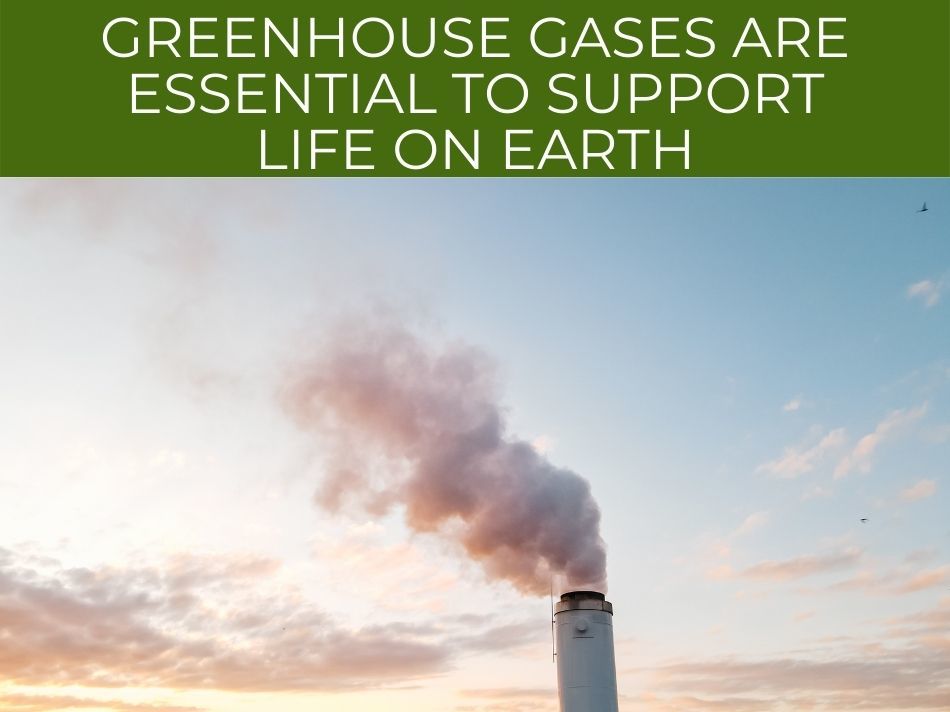
Greenhouse gases are essential to support life on earth
Natural cycles in the earth’s ecosystem balance the amount of greenhouse gases in the atmosphere.
Carbon dioxide and methane are part of the carbon cycle.
Most greenhouse gases are part of natural cycles on earth, & are essential to supporting life. Plants require carbon dioxide for photosynthesis. Nitrous oxide provides plants & animals with nutrients. Greenhouse gases help maintain temperatures that plants & animals require to live.
Plants and animals produce carbon dioxide through respiration, and animals produce methane as a waste product.
Methane is converted to carbon dioxide by sunlight, but this process takes twelve years.
Plants then reabsorb carbon dioxide from the air during photosynthesis and make it into food, or structural parts of the plant.
See the complete article on the inputs & outputs of photosynthesis.
The carbon is returned to the soil when plants and animals die, or through animal waste products.
Nitrous oxide is part of the nitrogen cycle.
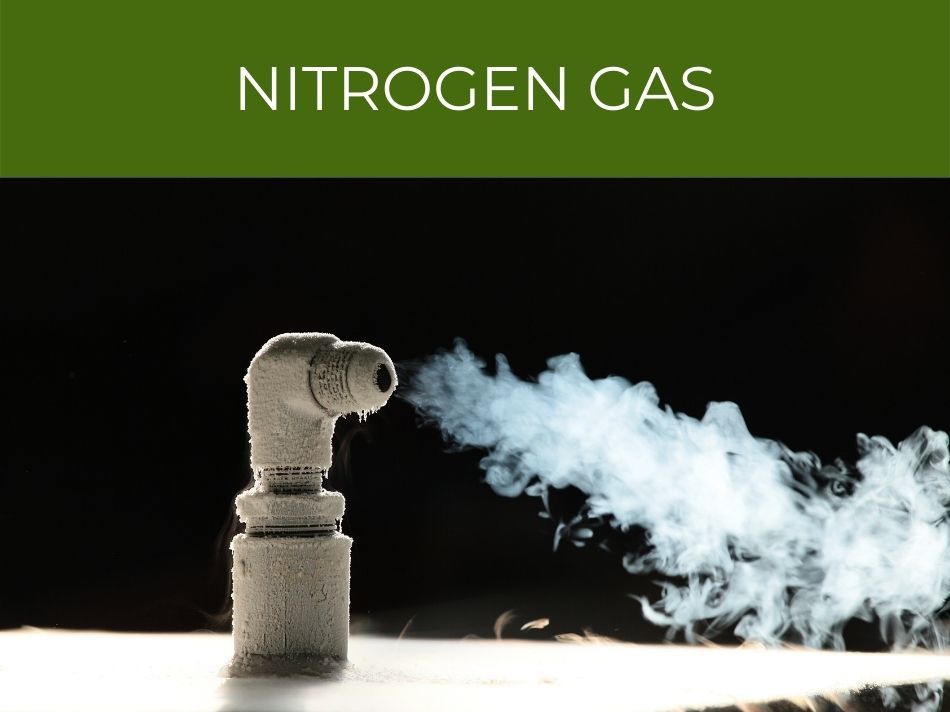
Nitrogen gas in the air is ‘fixed’ in the soil by bacteria, or when ammonium fertilizer is made in an industrial process.
Ammonium is converted into nitrate by other soil organisms, and used as a nutrient by plants and animals, before being released back into the air as nitrogen.
See the complete article on what plants need to grow.
Ozone is essential in the upper parts of the atmosphere, for filtering out harmful UV-C rays from sunlight.
Fluorinated gases are not naturally produced and are all made through industrial processes.
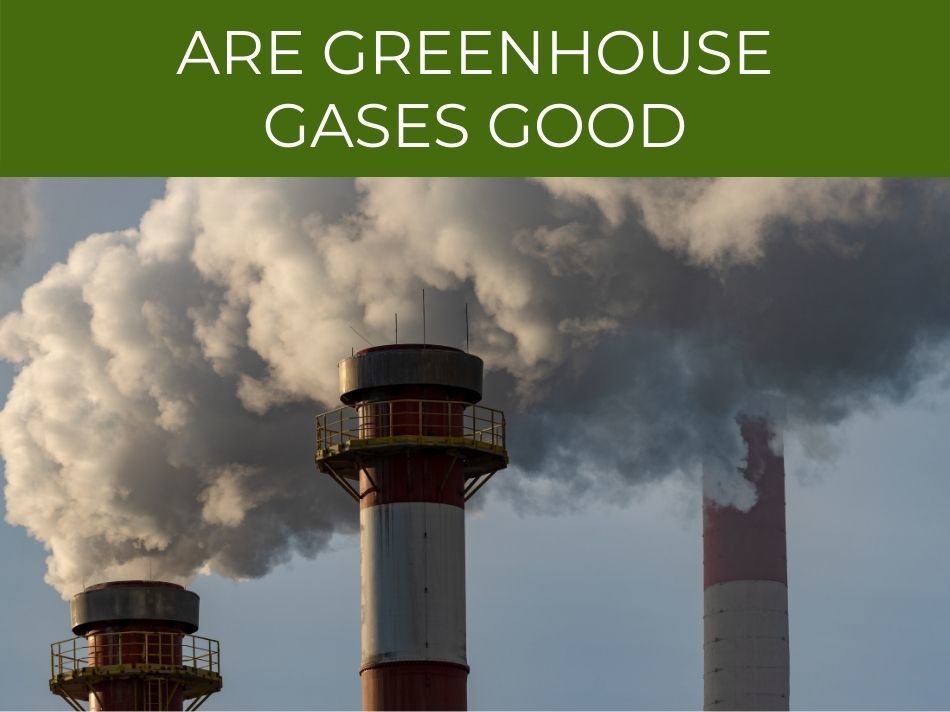
Are greenhouse gases good
Greenhouse gases are not themselves good or bad, but the amount of them in the atmosphere is important.
If there are too many greenhouse gases in the atmosphere, the earth will warm too much and cause climate change.
The natural cycles of the earth’s ecosystem usually keeps the right balance of greenhouse gases for life to survive.
Human industrial processes have increased the amount of greenhouse gas production, and the natural cycles are out of balance.
Greenhouse gases are good when they are in the atmosphere in the right amount. Greenhouse gases become a problem when they lead to increased temperatures, which impact weather patterns, create more extreme weather events, & change conditions that can lead to extinction of species.
Activities like energy production, industrial processes and deforestation have led to an increase in greenhouse gases.
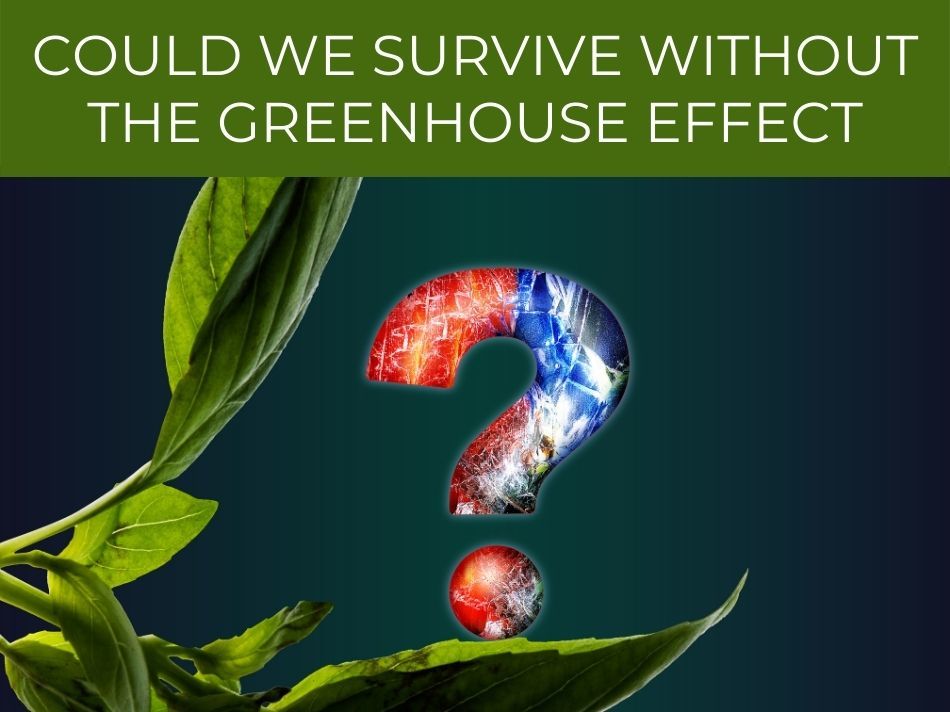
Could we survive without the greenhouse effect
Greenhouse gases make up 0.1 percent of the earth’s atmosphere.
Even though these other gases are only a small proportion of the total atmosphere, they can have a big impact on the earth’s climate through the greenhouse effect.
Without the greenhouse effect, the temperature of the Earth would drop from roughly 57F to 0F. Humans could probably survive the lower temperature, but most plants and animals would not, making food difficult to produce. Most lakes & oceans would also freeze.
If there were no greenhouse gases, the temperature of the earth would drop by about 57 degrees Fahrenheit.
This would mean an average temperature of 0 degrees Fahrenheit.
Humans might be able to survive the immediate impact of no greenhouse effect with artificial shelters.
People would not be able to survive for long, however, because all the seas would freeze over and most plants and animals would die.
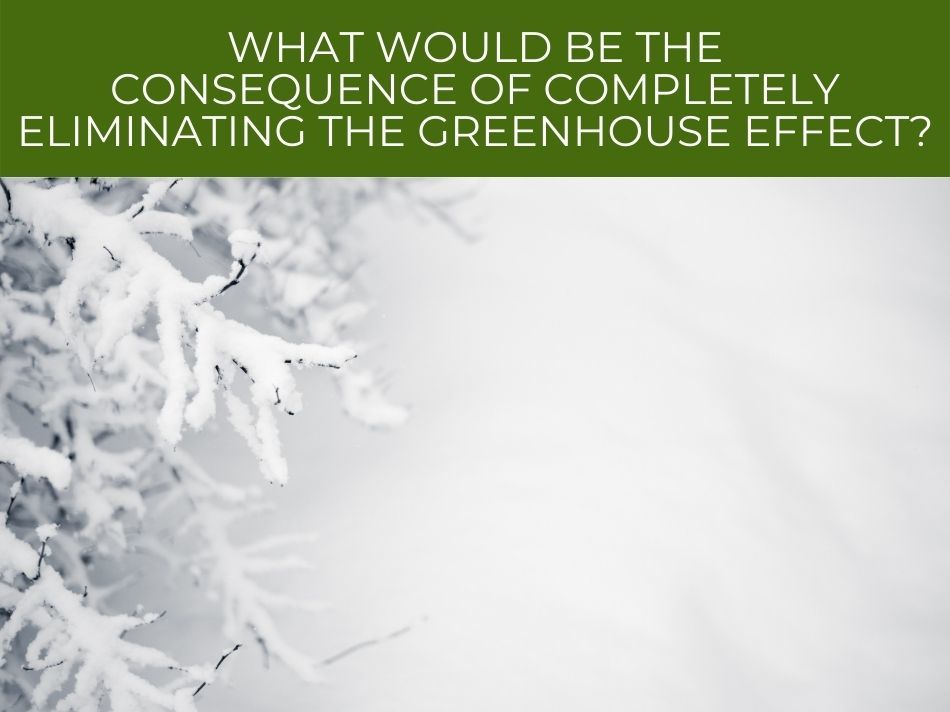
What would be the consequence of completely eliminating the greenhouse effect?
If the greenhouse effect was completely eliminated, the temperature on earth would drop significantly.
The average temperature is currently around 57 degrees Fahrenheit, and this would drop to around 0 degrees.
If the greenhouse effect was completely eliminated, the average surface temperature of the Earth would drop from 57F to 0F. Although humans would probably not die immediately, the oceans would freeze over, plants & most animals would not survive, & people would starve to death fairly quickly.
Life would eventually die out, as all the water would freeze over and all the plants and animals would die.

Conclusion
Too many greenhouse gases in the atmosphere will lead to the earth warming too much, and climate change.
But greenhouse gases are part of natural cycles, and are kept in balance by natural processes.
The problem comes when human processes cause an imbalance in the natural system.

